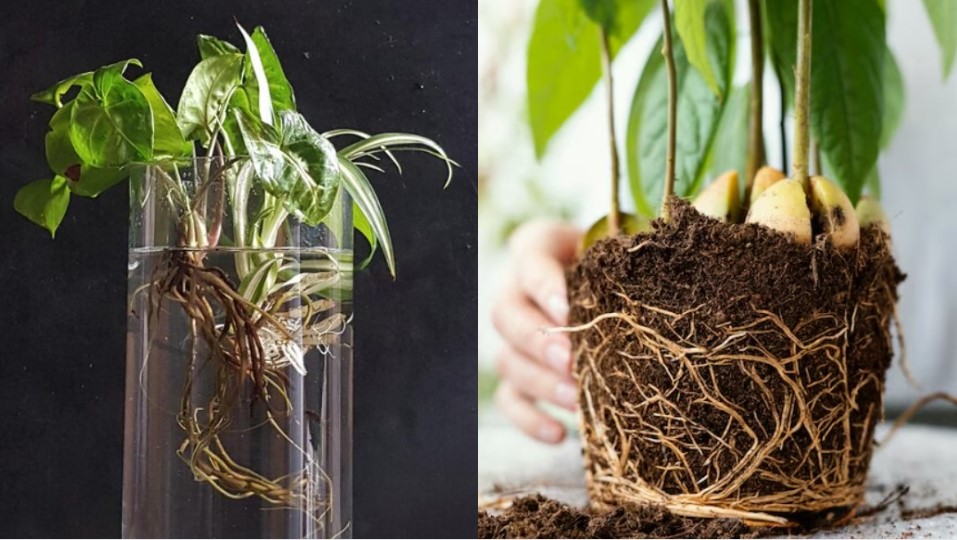Plants, the silent architects of nature, employ various root systems to navigate the diverse environments they inhabit. One crucial distinction lies between water roots and soil roots, each adapted to specific conditions. In this exploration, we unravel the intricate differences, shed light on their unique characteristics, and delve into the impact of these root systems on plant growth.
Introduction
Brief Overview of Root Systems
Root systems serve as the foundation for plant growth, providing stability and facilitating nutrient absorption. Understanding the nuances of water roots and soil roots is essential for gardeners, farmers, and plant enthusiasts alike.
Importance of Understanding Water Roots vs Soil Roots
As we embark on this journey, we recognize the significance of discerning between water roots and soil roots. This knowledge empowers individuals to optimize plant growth in various environments.
Characteristics of Water Roots
Definition and Purpose
Water roots, also known as aquatic roots, are specialized structures designed for plants residing in waterlogged environments. Their primary purpose is to anchor the plant and absorb nutrients from the water.
Adaptations for Aquatic Environments
From floating vegetation to submerged plants, water roots showcase remarkable adaptations for survival in aquatic habitats. These adaptations range from increased surface area for nutrient absorption to the development of specialized pores.
Role in Nutrient Absorption
Water roots excel in extracting nutrients directly from the water, showcasing a unique ability to absorb essential elements without the intermediary of soil.
Characteristics of Soil Roots
Definition and Functions
Soil roots, on the other hand, anchor plants in terrestrial environments, providing stability and support. They play a crucial role in water and nutrient uptake from the soil.
Adaptations to Terrestrial Environments
With a diverse array of soil types and conditions, soil roots have evolved to adapt. This includes the development of root hairs, mycorrhizal associations, and other mechanisms enhancing nutrient absorption.
Role in Water and Nutrient Uptake
Soil roots serve as conduits for water and nutrient absorption from the soil, acting as the lifelines for plant survival in non-aquatic habitats.
Key Differences Between Water Roots and Soil Roots
Structural Variances
Distinct structural features set water roots and soil roots apart, influencing their efficiency in nutrient absorption and environmental adaptation.
Environmental Dependencies
Understanding the environmental dependencies of each root system is crucial for successful plant cultivation. Factors such as water availability and soil composition play a pivotal role.
Nutrient Absorption Contrasts
Comparing the nutrient absorption capabilities of water roots and soil roots provides insights into their respective strengths and weaknesses. know about Winter Vegetable Gardening in Texas.
Plants with Specialized Root Systems
Examples of Hydrophytic Plants
Exploring hydrophytic plants exemplifies the diversity of water root adaptations and their prevalence in aquatic ecosystems.
Examples of Xerophytic Plants
In contrast, xerophytic plants showcase the resilience of soil roots in arid and dry environments, emphasizing their ability to thrive in challenging conditions.
Challenges and Benefits of Each Root System
Water Roots: Pros and Cons
Understanding the advantages and limitations of water roots is essential for cultivating plants in ponds, lakes, and other water bodies.
Soil Roots: Pros and Cons
Similarly, recognizing the benefits and challenges of soil roots aids in making informed decisions for terrestrial plant growth.
Adaptability in Different Environments
Examining the adaptability of each root system sheds light on their versatility in varying environmental conditions.
Human Impact on Root Systems
Agricultural Practices
Human activities, especially in agriculture, can influence the health and development of both water and soil root systems. Sustainable practices are crucial for minimizing negative impacts.
Urbanization Effects
Urbanization poses challenges for plant root systems, and understanding these effects is vital for mitigating damage and promoting green spaces in urban environments.
Conservation Efforts
Efforts to conserve and protect natural habitats contribute to the preservation of diverse root systems, supporting the overall health of ecosystems.
Tips for Gardening and Plant Care
Choosing the Right Plants for Your Environment
Selecting plants based on their root system compatibility with your environment is a key factor in successful gardening.
Watering and Soil Considerations
Balancing watering routines and soil quality ensures optimal conditions for both water-rooted and soil-rooted plants.
Importance of Balanced Nutrient Supply
Providing a balanced nutrient supply caters to the unique needs of both root systems, fostering healthy plant development.
Case Studies
Successful Plant Growth with Water Roots
Examining real-world examples of thriving water-rooted plants offers valuable insights for enthusiasts looking to cultivate aquatic vegetation.
Successful Plant Growth with Soil Roots
Likewise, exploring instances of successful soil-rooted plant growth demonstrates the adaptability and resilience of terrestrial plants.
Comparative Analysis
A comparative analysis of water-rooted and soil-rooted plants in specific conditions aids in understanding their performance disparities.
Future Implications and Research
Advancements in Agricultural Technology
Ongoing research and technological advancements in agriculture continue to influence the development of innovative root systems for improved crop yields.
Sustainable Root System Development
The pursuit of sustainable root system development is integral to addressing global challenges such as food security and environmental sustainability.
Environmental Impact Studies
Conducting comprehensive studies on the environmental impact of different root systems contributes to informed conservation and land management strategies.
Engaging with Readers
Interactive Gardening Tips
Providing interactive tips for gardening enthusiasts fosters engagement and encourages readers to apply newfound knowledge in their own plant care routines.
Answering Common Questions
Addressing common questions about water roots and soil roots enhances reader understanding and promotes a sense of community among plant enthusiasts.
Encouraging Reader Feedback
Encouraging feedback from readers creates a dynamic conversation, allowing for the exchange of experiences and insights within the community.
Conclusion
Recap of Key Points
In conclusion, recognizing the distinctions between water roots and soil roots is paramount for successful plant cultivation. Their unique characteristics and adaptability underscore the marvels of nature’s design.
Encouragement for Exploring Different Plant Environments
Encouraging readers to explore and appreciate the diversity of plant environments fosters a deeper connection with nature and a greater understanding of the role root systems play in sustaining life.
FAQs
- Can plants have both water roots and soil roots simultaneously?
- Plants can exhibit both water roots and soil roots, adapting to the specific conditions of their environment.
- What are the challenges of cultivating water-rooted plants in home gardens?
- Home gardeners may face challenges such as maintaining water quality and preventing stagnation when cultivating water-rooted plants.
- Do all plants have the same type of soil roots?
- No, plants exhibit variations in soil root structures based on factors like soil type, moisture levels, and nutrient availability.
- How can urban dwellers support soil-rooted plants in limited green spaces?
- Urban dwellers can promote soil-rooted plant growth by implementing container gardening, vertical gardening, and green roof initiatives.
- Are there any water-rooted plants suitable for beginners?
- Yes, beginner-friendly water-rooted plants include water lilies, lotus, and various aquatic ferns that require minimal care.





